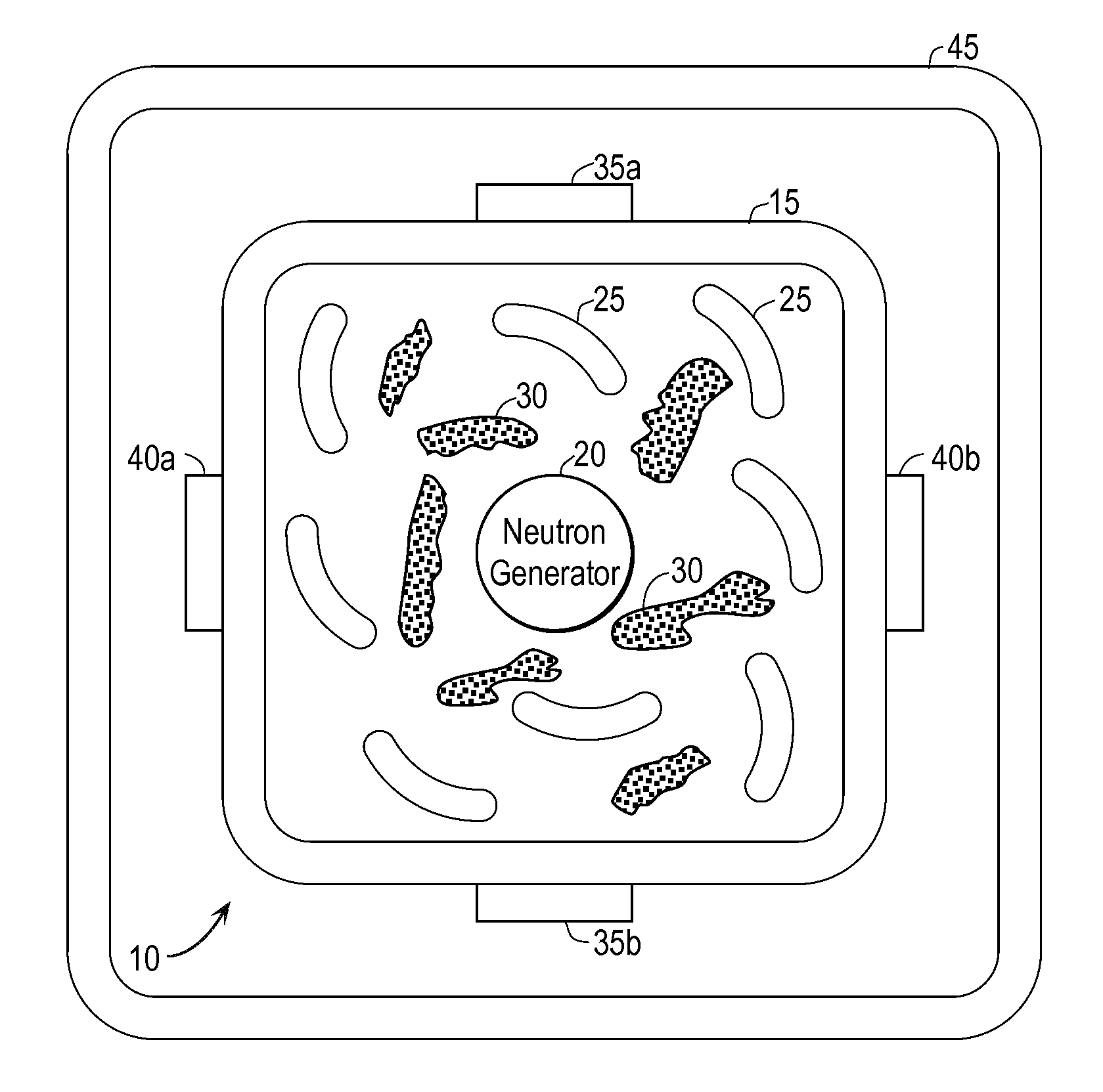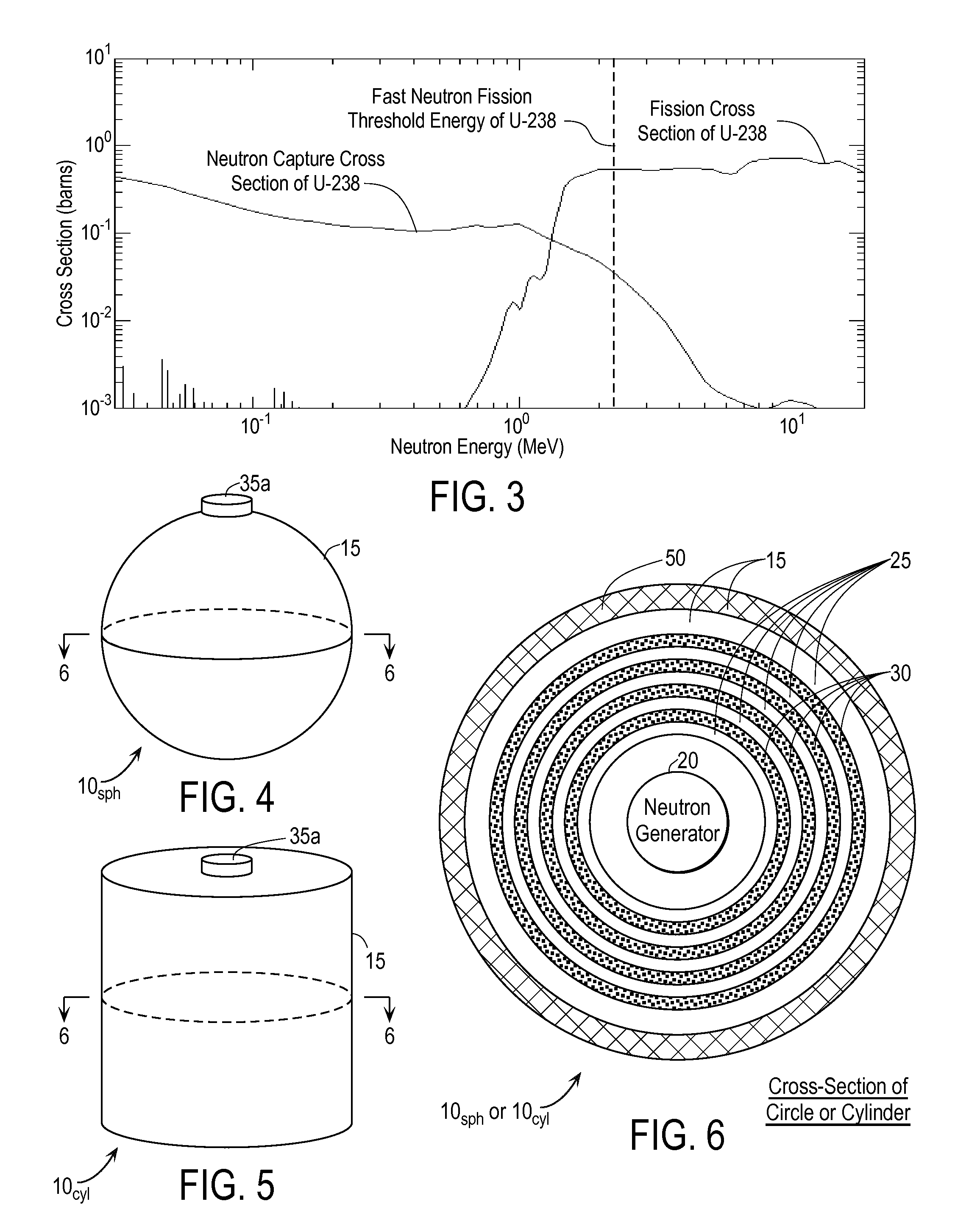Techniques for On-Demand Production of Medical Radioactive Iodine Isotopes Including I-131
a technology of iodine isotopes and radioactive iodine, which is applied in the direction of specific isotope recovery, chemical to radiation conversion, and neutron source, etc., can solve the problems of shortages, patient treatment delays, and the inability to use products immediately, so as to reduce the production of pu-239, minimize neutron absorption, and high neutron energy
- Summary
- Abstract
- Description
- Claims
- Application Information
AI Technical Summary
Benefits of technology
Problems solved by technology
Method used
Image
Examples
Embodiment Construction
Overview of Embodiments
[0076]FIG. 1 is a stylized high-level schematic of a radioisotope generator 10 according to an embodiment of the present invention, and is used to illustrate salient features that can be viewed as generic to the various embodiments discussed below. The main components of radioisotope generator 10 include an irradiation chamber 15, a fast neutron generator 20, and, for preferred embodiments, one or more neutron-reflecting elements 25. The irradiation chamber is configured to accept a charge of what is referred to as non-enriched uranium (“NEU”).
[0077]As mentioned above, the NEU can be in any suitable form, including elemental metal, salt, alloy, molten salt, molten alloy, slurry, or other mixture, and can assume any one of a number of shapes and states, as will be described below. For purposes of generality, the NEU is shown as a plurality of arbitrary-shaped bodies 30 (stippled for clarity). The irradiation chamber is generally provided with mechanisms for int...
PUM
 Login to View More
Login to View More Abstract
Description
Claims
Application Information
 Login to View More
Login to View More - R&D
- Intellectual Property
- Life Sciences
- Materials
- Tech Scout
- Unparalleled Data Quality
- Higher Quality Content
- 60% Fewer Hallucinations
Browse by: Latest US Patents, China's latest patents, Technical Efficacy Thesaurus, Application Domain, Technology Topic, Popular Technical Reports.
© 2025 PatSnap. All rights reserved.Legal|Privacy policy|Modern Slavery Act Transparency Statement|Sitemap|About US| Contact US: help@patsnap.com



